Rhinoplasty Surgery Risks, Recovery, Candidacy & Cost
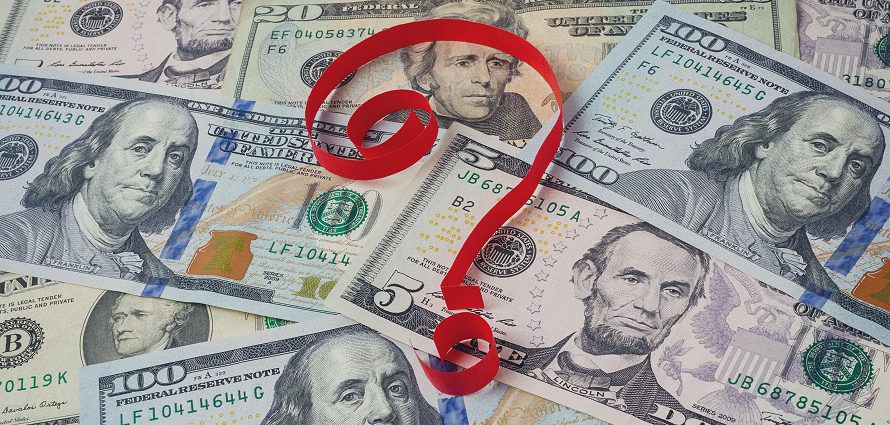
Like all surgical procedures, rhinoplasty confers its share of risks. Fortunately, serious rhinoplasty complications are rare. The best way to protect yourself is to choose a highly qualified, board-certified plastic surgeon and follow his or her pre- and postoperative instructions carefully.
Knowing your rhinoplasty risks can help ensure that complications are caught early and dealt with swiftly.
Rhinoplasty risks may include:
- Anesthesia complications
- Infection at incision site(s)
- Bleeding
- Nasal obstruction
- Breathing issues
- Septal perforation (a small hole in the septum)
- Sinus infection
- Graft or implant migration (if relevant)
- Burst blood vessels on face
- Skin or contour irregularities
- Asymmetry
- Nasal drainage
- Stiffness in upper lip
- Scarring or poor wound healing
- Skin or tissue death
- Dissatisfaction with the cosmetic results
- The need for follow-up nose surgery
Rarely, more serious rhinoplasty risks may include:
- Heart and lung complications
- Death
Another rare risk is deep vein thrombosis (DVT), which occurs when a blood clot in a vein deep inside your body blocks the blood flow and causes swelling and pain. This clot may dislodge and move through the bloodstream, causing a pulmonary embolism, among other serious complications.
How to Avoid Unnecessary Risks
Planning ahead can help you avoid risks. Make sure to select a board-certified plastic surgeon. If you are considering surgery in another country, make sure the doctor has impressive credentials and is in good standing with the licensing and surgical review agencies of his or her country, and make sure that all arrangements for recovery and follow-up are made in advance of surgery.
In addition, if you plan to have other plastic surgery procedures performed at the same time as your rhinoplasty, ask your surgeon how the additional procedures affect your overall risk profile. Make sure you weigh these factors in your decision.
Rhinoplasty Risk Management
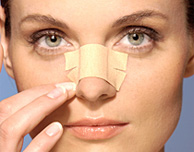
Some rhinoplasty risks can be prevented or minimized. Walking as soon as possible after your nose surgery can help boost blood flow and lower your risk of DVT. Taking your antibiotic as directed for as long as directed after your nose surgery can help reduce your risk of developing an infection. It is also prudent to make sure your nose is well protected after your surgery.
Quitting smoking before your rhinoplasty (and hopefully staying the course afterward) can minimize your risk of infection, poor wound healing and skin or tissue death after your nose surgery. The use of alcohol and certain over-the-counter remedies such as aspirin or herbal preparations may increase your risk of bleeding and should be avoided.
Your surgeon should explain the warning signs of certain rhinoplasty complications, including infection, and tell you what to do if they should occur. Signs of post-rhinoplasty infections may include an elevated temperature, redness, discharge and/or foul smell at the incision sites, and/or severe swelling or pain. Make sure that the lines of communication between you and your surgeon are open during your rhinoplasty recovery. If something doesn’t feel or seem right, contact your surgeon’s office.
Are You a Candidate?
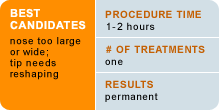
You may be a good candidate for rhinoplasty if the nose you were born with makes you self conscious or unhappy. Other candidates may be unhappy with how their nose has aged. Even slight changes to the shape of the nose can have a dramatic effect on appearance and can change how people interact with you. Plastic surgery can reshape deformities, reshape changes from aging and other causes, and restore balance.
Expectations are an important element in what makes a good candidate. The best nose surgery candidates simply want to improve their nose appearance, but do not seek perfection. The ideal candidates are well-adjusted and otherwise happy with their lives and do not expect rhinoplasty to transform them into someone else.
Rhinoplasty isn’t just a plastic surgery procedure for women. Male nose surgery is a commonly performed procedure (though admittedly not as popular as female). It is important to openly discuss your procedure with your plastic surgeon. He or she will help you to understand the potential enhancement the surgery will provide. Your surgeon will also explain the rhinoplasty cost, describe what you can expect while recovering from rhinoplasty and show you a selection of rhinoplasty before and after photos.
Minimum Age for Rhinoplasty
Many young people consider rhinoplasty; however, the procedure should wait until after the teenage growth period that occurs in the mid-teens. This growth period normally occurs from ages 14 to 15 for girls and somewhat later for boys.
The Rhinoplasty Procedure
Rhinoplasty, or nose reshaping, is the second most popular surgical cosmetic procedure in the United States, according to the American Society of Plastic Surgeons. Rhinoplasty reshapes the nose for both aesthetic and corrective purposes. Rhinoplasty can enlarge or reduce the nose, as well as reshape the bridge and nose tip. Approximately 15 percent of primary nose jobs require revisions for one reason or another. For most people, revision rhinoplasty is related to a specific cosmetic issue such as a twisted tip or a functional issue like difficulty breathing. Revision rhinoplasty is often more complicated and costlier than a primary nose job.
Recovery
New nose, new you! Not so fast; your new nose won’t be fully evident until after your rhinoplasty recovery. This process varies considerably from one person to another. How quickly you rebound depends on many factors, including the extent of your nose surgery, your personal resilience factors, your surgeon’s skill set and how closely you follow his or her pre- and postoperative instructions.
Immediately after your procedure, your surgeon will likely place a small splint on your nose. This splint protects your nose by keeping it stable for at least five to eight days. There is typically some mild to moderate discomfort after nose surgery. Your surgeon will discuss appropriate pain medications with you.
Another common concern after nose surgery is nasal congestion. You will be congested, but you can’t blow your nose for at least one week. Ask your surgeon what decongestants are OK to take during your rhinoplasty recovery. You should avoid decongestants that also contain other active ingredients. Some combination products also contain aspirin or other nonsteroidal anti-inflammatory drugs that increase bleeding risk during your recovery. Read the labels carefully.
Bruising and swelling are common after rhinoplasty and may even occur under your eyes. Cold compresses help. Ask your surgeon what else he or she recommends to alleviate bruising or swelling. The herbal remedies arnica montana and bromelain are sometimes used for this purpose.
The majority of the swelling resolves within two weeks and the rest abates within a month. That said, it can take up to a year for swelling to fully subside. This is why most plastic surgeons suggest waiting at least one year before even considering revision rhinoplasty.
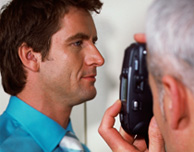
Steering clear of any trauma to your nose after your rhinoplasty is essential. Ask your surgeon for instructions on what you can or can’t do after your nose surgery. You should sleep on your back after your rhinoplasty to avoid putting any pressure on your new nose while you recover. Most people can return to work within seven to10 days after surgery. This will vary based on your job description.
Contact lenses are permitted immediately after nose surgery, but eyeglasses that rest on your nose are not. The opposite is true during eyelid surgery recovery. Exercise caution when washing your face and apply sunscreen to your nose once your surgeon says it’s OK to do so.
Recognizing Complications
Ask your surgeon what you should look out for during your rhinoplasty recovery, including the signs of infection or other rhinoplasty risks. It is also important that you know who to call in the event of complications.
Additional Procedures
Sometimes treating one area can cause an overall imbalanced appearance. If you are having the rhinoplasty procedure, you may also need to consider other facial procedures to achieve balance and proportion. For example, chin augmentation is often performed with rhinoplasty.
If you decide you need the additional procedure later, the two procedures may be more expensive than if you have them at the same time. Multiple procedures are increasingly popular as patients work with their surgeons to create more comprehensive treatment plans. A qualified surgeon can help you save time and potentially lower your rhinoplasty cost by combining treatments when appropriate.
What it Costs
The cost of rhinoplasty varies depending on the surgeon’s skill, the geographic area where the surgery is performed, and the type of structural and cosmetic changes made to the nose. Cost cannot be predicted accurately until the surgeon performs an examination and develops a surgical plan.
Primary rhinoplasty costs range from $3,000 to $8,000. The cost comprises three fees: surgical fee, anesthesia fee, and facility fee. The anesthesia fee ranges from $600 to $1,000, the facility fee ranges from $700 to $1,100, and the rest of the cost is the surgeon’s fee. Revision rhinoplasty is often costlier than primary rhinoplasty, with overall costs ranging from $10,000 to $15,000.
The most costly aspect of rhinoplasty is the surgeon’s fee. This cost is the most difficult to estimate, since the fee can vary greatly depending on the surgeon’s training, skill, experience, and other factors. You can learn more about fees from our table of average surgeon fees.
Skill and Training Affects Rhinoplasty Cost
It’s important to choose a board-certified plastic surgeon from the American Board of Plastic Surgery, who has extensive, specific rhinoplasty experience, as well as expertise in all areas of facial plastic surgery. Board certification requires specific and rigorous surgical education and training. More highly qualified, board-certified surgeons command higher fees, but they can also help ensure that you receive the most appropriate treatment for your condition, employ the most appropriate techniques, increase your odds of success, and reduce the risk of complications.
The type of certification is also important. There are more than 150 self-designated boards, but only a handful that are designated by the American Board of Medical Specialties (ABMS), such as the American Board of Plastic Surgery. Be sure to ask your surgeon about surgical training and board certification when you investigate the cost for rhinoplasty.
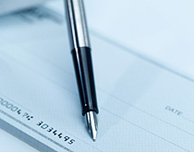
Extent of Rhinoplasty Procedure
The extent of the surgery makes a cost difference. For example, a slight surgical modification or reduction to the point of the nose requires less surgical time than narrowing the bridge or a complete change of shape. The type of rhinoplasty procedure, open or closed, also affects surgical time and cost.
Payments for Rhinoplasty
Some of the cost of rhinoplasty can be covered by insurance if the rhinoplasty procedure is related to modifying the nasal passage to aid in breathing, or another medical necessity. You can ask your surgeon about filing for insurance. Rhinoplasty for purely cosmetic reasons is not covered by insurance.
If the cost for rhinoplasty is too much to pay at once, ask your surgeon about monthly payments. For financing options and tips, continue reading about Patient Financing.



